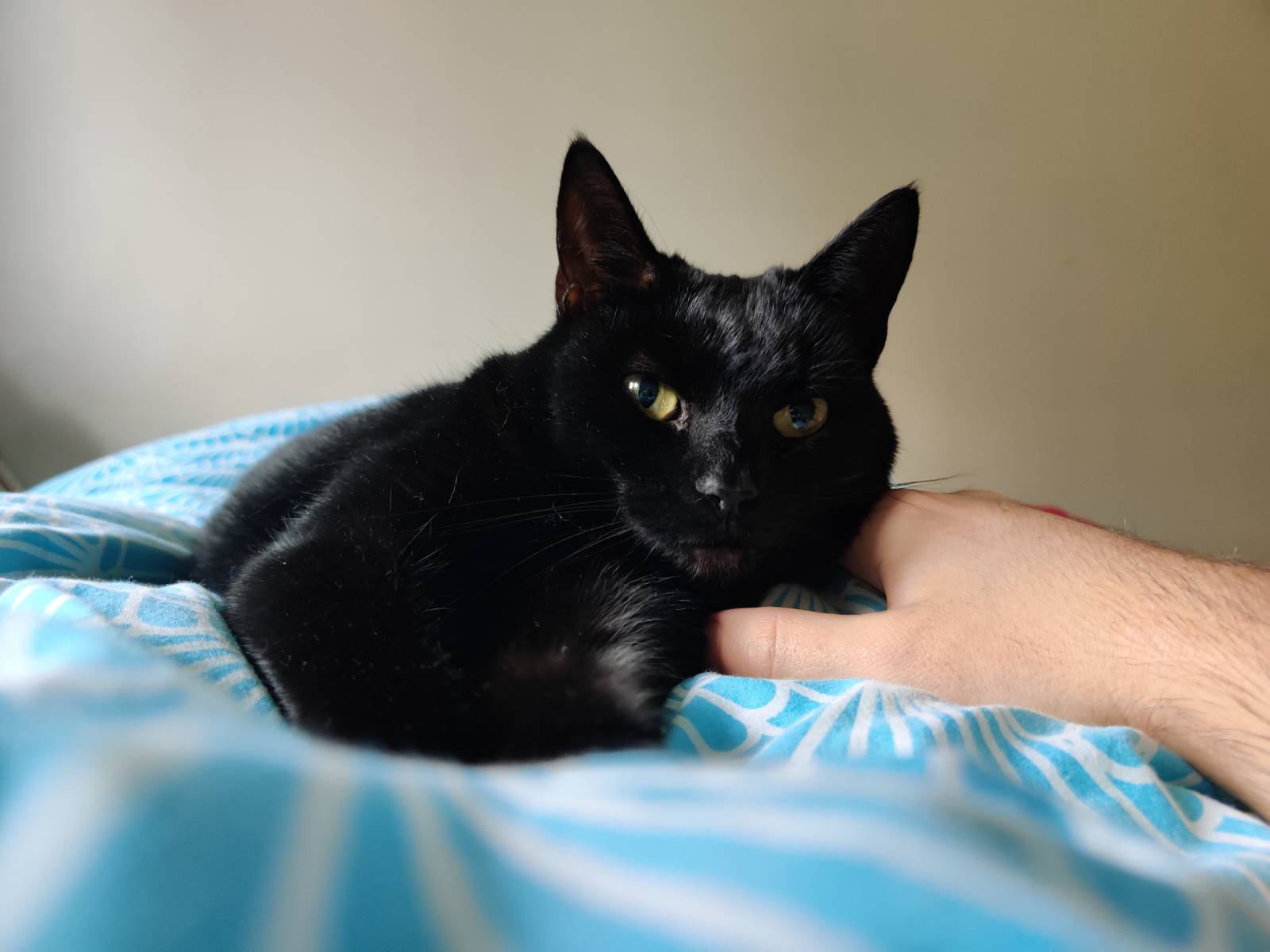In Europe this would likely be 30 mins commute on a train if you work in any sizable city. And you can take your bike on the train and finish the rest of the commute on the bike.
Have you ever seen Amsterdam? About 60% of people ride a bike daily, and it accounts for about 40% of all traffic movements in the city.
If you replaced all of these bike journeys with cars, the yearly economic burden would be around €750,000,000 (~$785,000,000) from congestion alone. Are bikes good for all journeys, no. But it's hard to say that most cities wouldn't benefit from design that allows more short bike journeys.
If you're willing to walk somewhere then the idea of the bike is to make that trip quicker and expand the range of the trip in the time you have. Not to replace all car journeys.
I think this is a classic case of "The complainers are way more vocal than the life enjoyers", combined with modern technology being set up to promote controversial content. When someone's enjoying this life and being chill, they also don't usually care about spreading thier message. The complainers are either memetic or often political and seem to enjoy a much greater platform. Also more controversial content generates more negative engagement, and most social media promotes content that has high engagement, because it benefits them to have users engage and stay on the site longer.
CTRL+SHIFT+L to sync my room lights to the screen using huenicorn. Plan on hooking up openrgb as well when I can be bothered to write a script.
In the UK you can get on a train without booking a ticket for that specific train, for example an open return or just a day pass. The train company has no idea how many seats will be taken or how many people will get on the train. So say it's a 10 carriage train. Every seat is taken by someone, reserved or unreserved, and theres not a bit of standing room anywhere (this is very common). Which person sat on a reserved red light indicator seat should you kick out? And how do you know they didn't reserve that seat specifically before you do that? Or do you kick someone out of a green lit non-reserved seat, with thier proof that the seat is not reserved and they are allowed to sit there, and your proof that you dont even have that seat reserved. It will also be the old people and small children sat down, and you won't really be popular if you make them stand. Yeah you're not sitting if you have this ticket. You'll likely be stood by the entrance door for 3 hours instead. This seat reservation ticket may as well say, "sorry no seat today", and it's definitely infuriating to lean that you will be standing for your journey when you've payed full price for a seat, maybe £40 depending where.
Sounds like you're well paid and your time is valued, I imagine most devs would be happy with that!
The GMO gene in Golden Rice is patented. It's just licensed for use for free in developing countries on small hold farms. A monoculture of golden rice would be less diverse than the current wide range of heritage rice varieties, and there could be over reliance on it which could case issues if there was a blight. Theres some concern that spread of the genes could catch unaware farmers with legal issues, but it's harder for rice genes to spread than most other crops, as they're usually self-pollinating. The risks dont seem to outweigh the benefits in this case, but it is more complex than it appears on the surface level. Greenpeace doesn't seem to be able to use scientific research to back its claims here, and is instead just staying true to it's anti-GMO message.
The existence of dinosaurs is well-established through a variety of scientific evidence. Here are some of the key proofs:
1. Fossil Evidence
- Bone Fossils: The most compelling evidence for the existence of dinosaurs comes from fossils. These are preserved remains found in sedimentary rocks that have formed from sediments laid down in ancient rivers, lakes, and seas. Dinosaur bones show distinct features, such as air-filled cavities that indicate they were adapted to support massive bodies while being lightweight, similar to modern birds.
- Tracks and Footprints: Fossilized footprints and tracks give clues about the behavior, movement, and size of these creatures. Sites like the Paluxy River trackways in Texas and others around the world show clear, sequential dinosaur footprints.
- Egg Fossils: Fossilized eggs have been found in many locations around the world, providing direct evidence of reproduction in dinosaurs. Some nests even contain embryos, which help scientists understand growth and development in these creatures.
2. Geological Distribution
- Global Spread: Dinosaur fossils have been found on every continent on Earth, including Antarctica. This widespread geographic distribution is consistent with the known plate tectonics and continental drift over geological time scales, supporting the timeline in which dinosaurs are said to have existed.
3. Radiometric Dating
- Age Determination: Radiometric dating methods allow scientists to determine the age of rock layers where dinosaur fossils are found. These methods typically use the decay of naturally occurring isotopes, such as uranium-lead or potassium-argon dating, to establish the age of rocks as ranging from about 66 to over 200 million years old—corresponding to the Mesozoic Era, the time period during which dinosaurs thrived.
4. Comparative Anatomy and Phylogeny
- Anatomical Similarities: The study of dinosaur fossils allows scientists to reconstruct their skeletons and infer muscle attachments and body shapes. Comparisons with modern animals can help interpret their posture, diet, and lifestyle.
- Evolutionary Relationships: Dinosaurs share many features with other groups of vertebrates, especially birds. In fact, modern birds are considered the direct descendants of theropod dinosaurs, a relationship supported by numerous anatomical and genetic data.
5. Soft Tissue and Molecular Evidence
- In some rare cases, soft tissues have been preserved in dinosaur fossils. For example, flexible blood vessels and cells have been reported in Tyrannosaurus rex fossils. While controversial and rare, such findings can provide insights into the biology of these ancient creatures.
6. Paleoenvironmental Reconstructions
- Contextual Clues: Fossilized plants, pollens, and associated animal fossils found alongside dinosaur remains help reconstruct the environments they lived in, further validating their existence and providing context about the ecosystem dynamics of the past.
Collectively, these evidences from paleontology, geology, and biology robustly demonstrate that dinosaurs existed as real, living organisms on Earth millions of years ago. Their study continues to provide valuable insights into the history of life on our planet.
Serious question, wouldn't it be cheaper to buy it?
It's a web app but you can add it to your home screen if you go to "settings -> install".
It's really active on github with new features. Open source too. https://github.com/aeharding/voyager
Can you middle click?


I appreciate your viewpoint, your garden looks great, but that short grass is a barren wasteland for biodiversity. You have to work out what's important for you, and all sides should respect that decision.
It would be possible to maintain some of it as a native wildflower meadow instead, and keep the overall length managed without using weed killers and poisons and huge amounts of water like grass requires. There's no such thing as a native weed, but you do have to remove some individuals for diversity and soil health if they grow too large. I do this with brambles and other large light blocking species, as I don't have the space to support them, even though they're great for wildlife, they end up having a short term negative biodiversity impact in a small space. Even a small corner or container of native wildflower would support native pollinators and vastly improve the health and biodiversity of your entire garden. Get a solitary bee hotel, if they exist in your country. Leave a pile of sticks/logs somewhere for insects. Get a pond if you can. You already compost so that's good. Nature isn't meant to be tidy, neat or uniform. But I understand that not everybody can appreciate the value that could be gained from millions of gardens improving thier biodiversity, and that conforming with others and past practices and traditions may be a stronger factor for some people to want to keep their gardens neat. You're clearly a good gardener, but no wildlife conservationist, you can have both though. It's not about being intentionally messy, it's about creating conditions for wildlife to be invited in. Those fully overgrown gardens are probably great for nature, but you are right that they have to consider the size of the space and the proximity of neighbours before doing that, and not being considerate of that can make them a bit of an asshole.